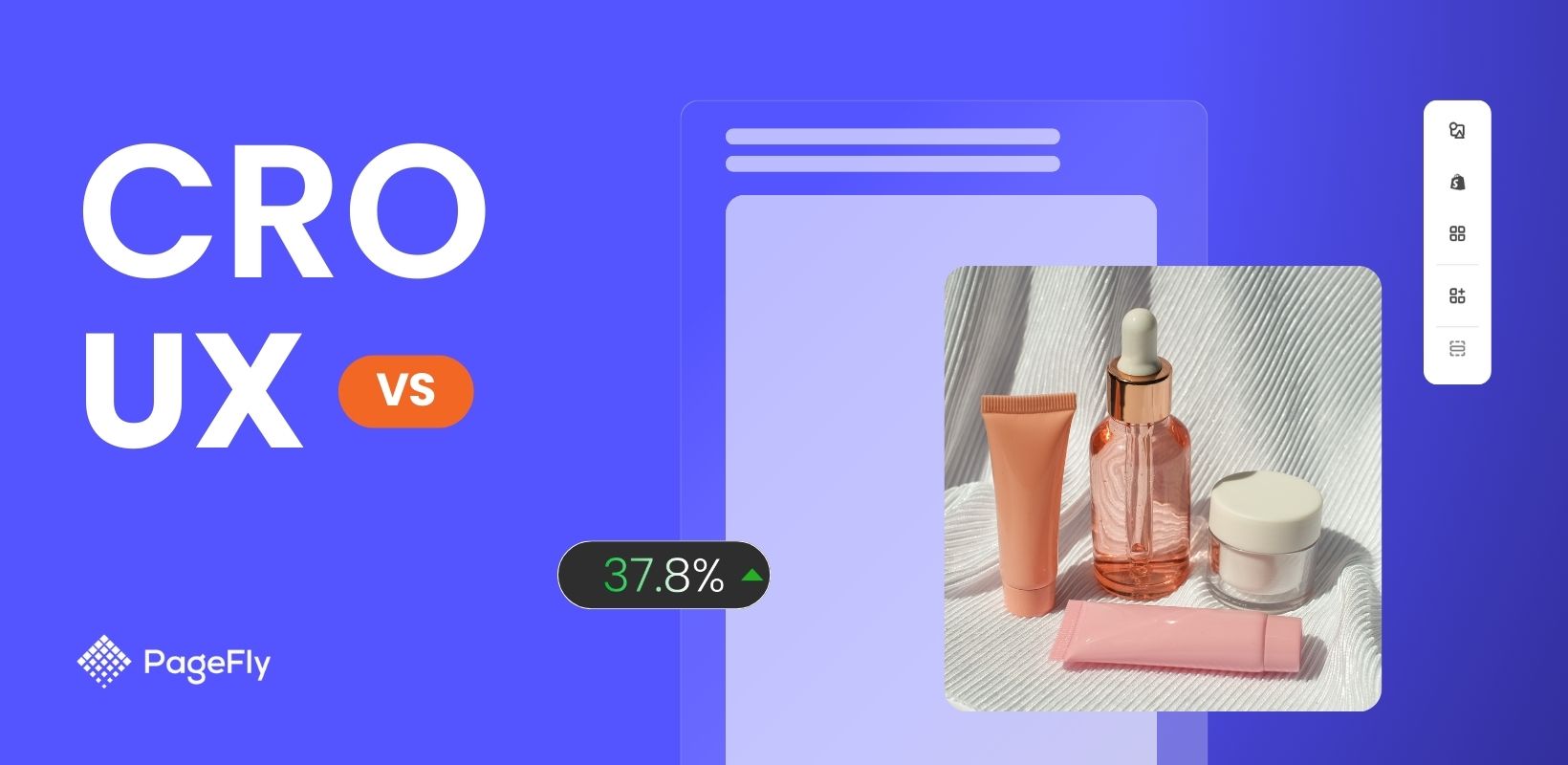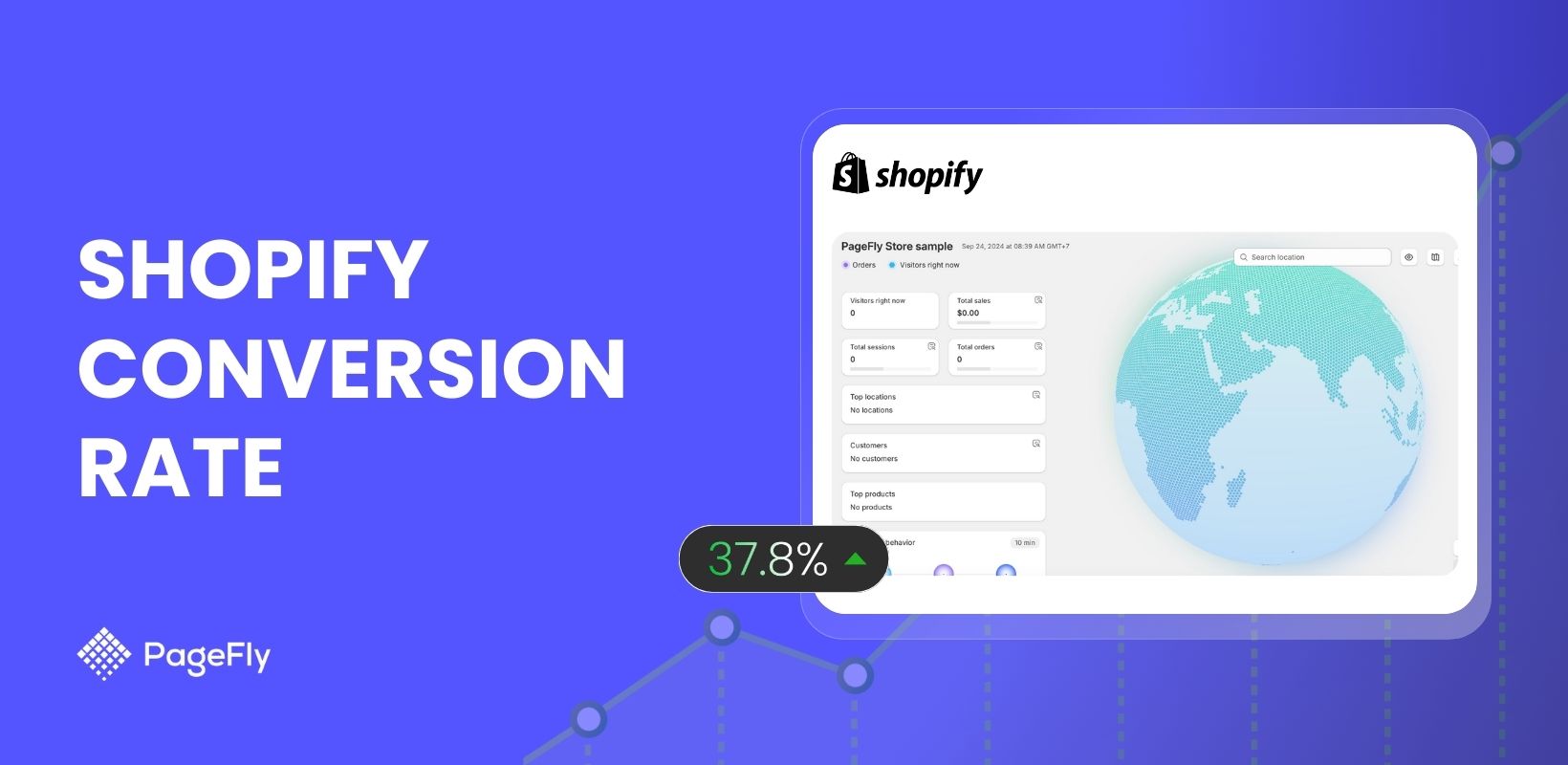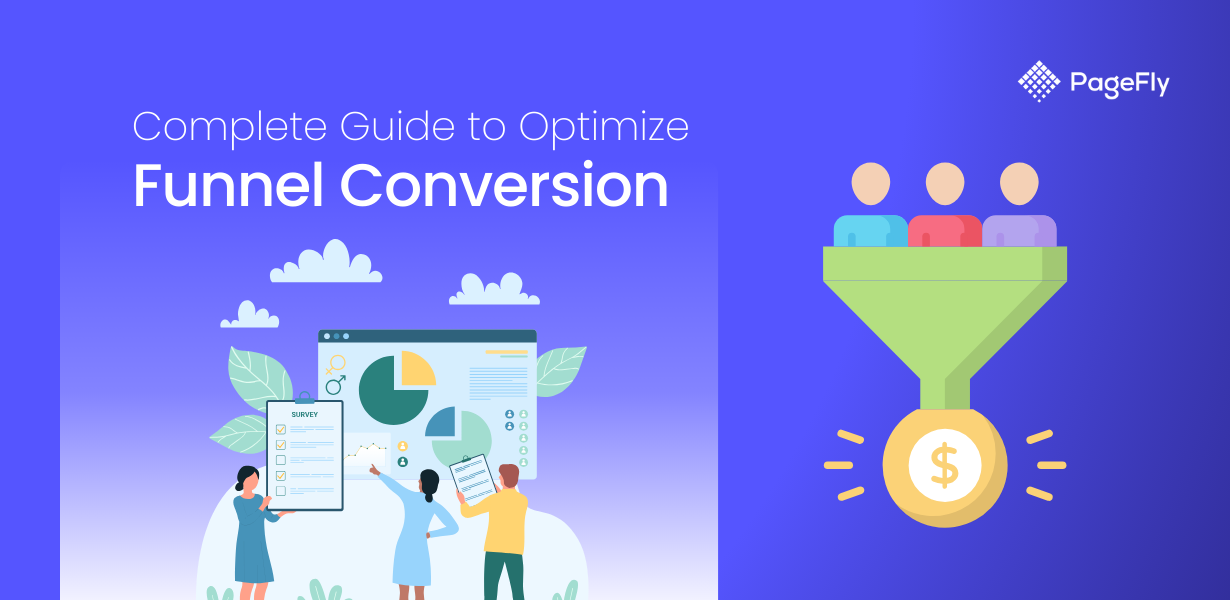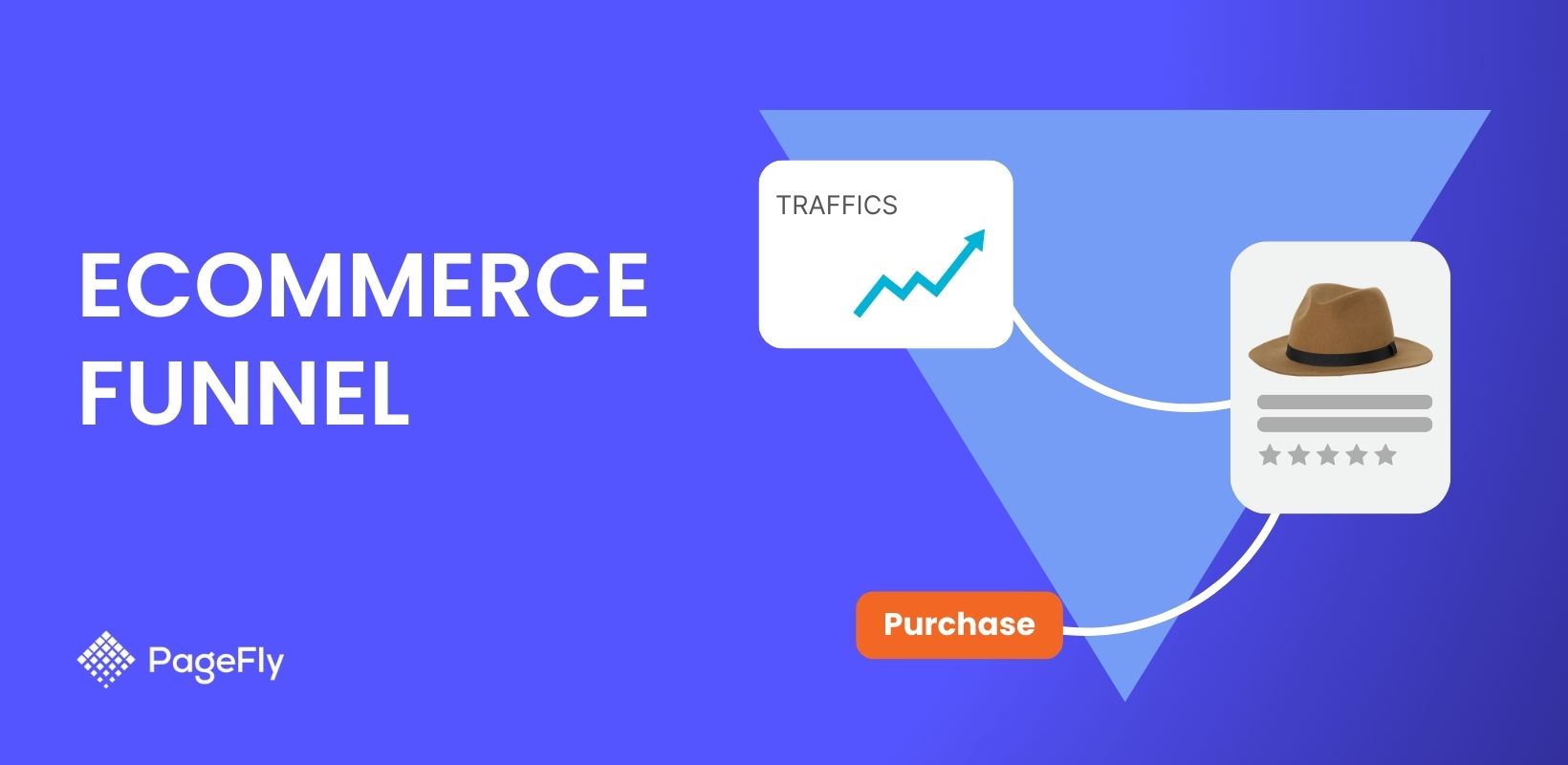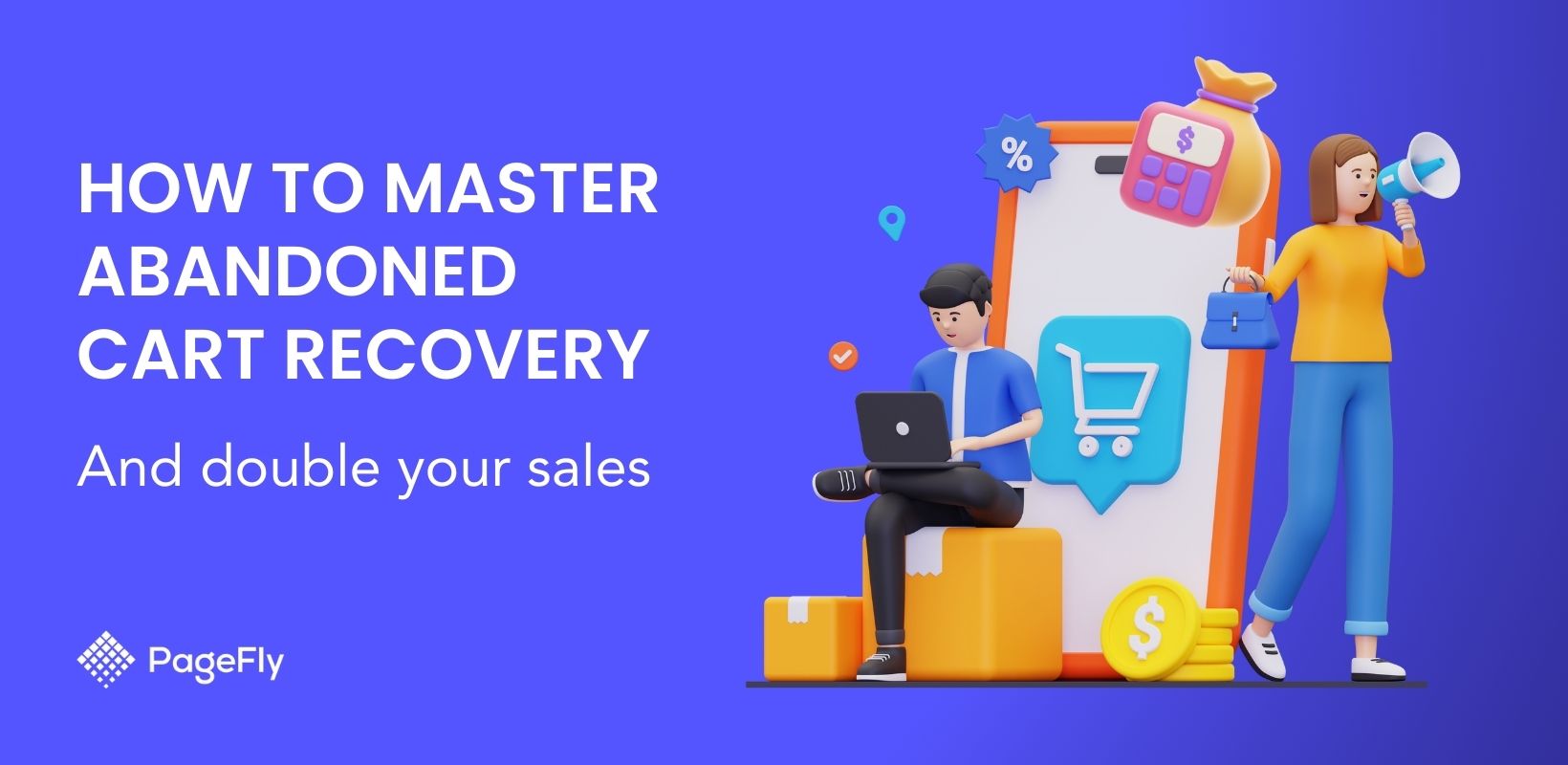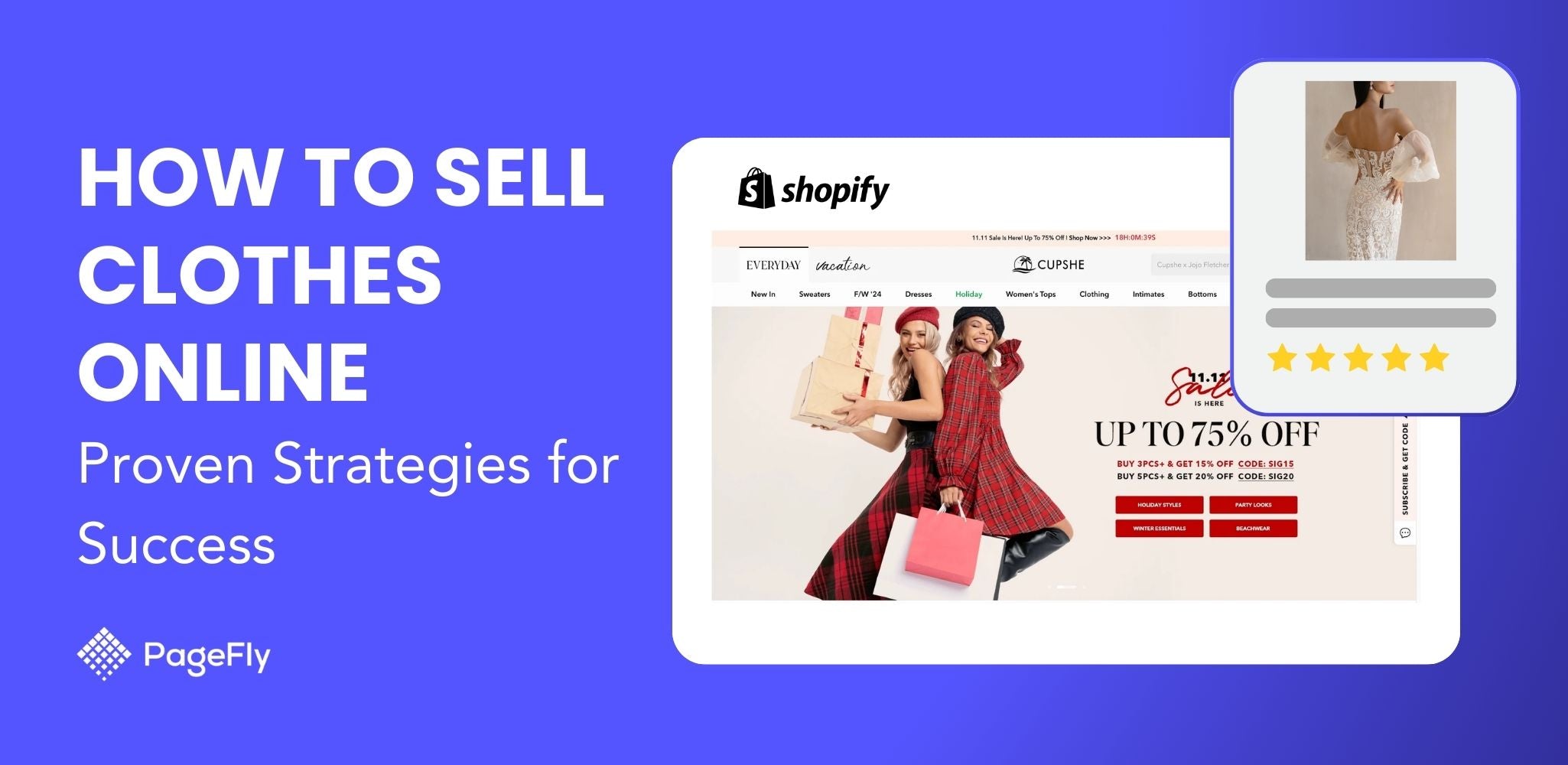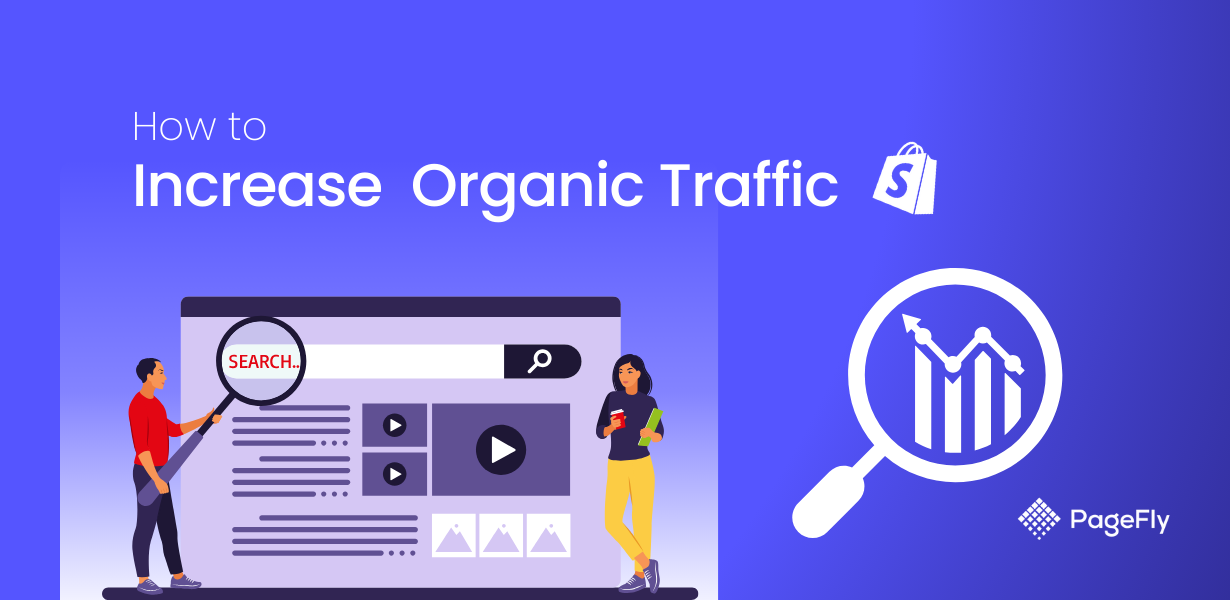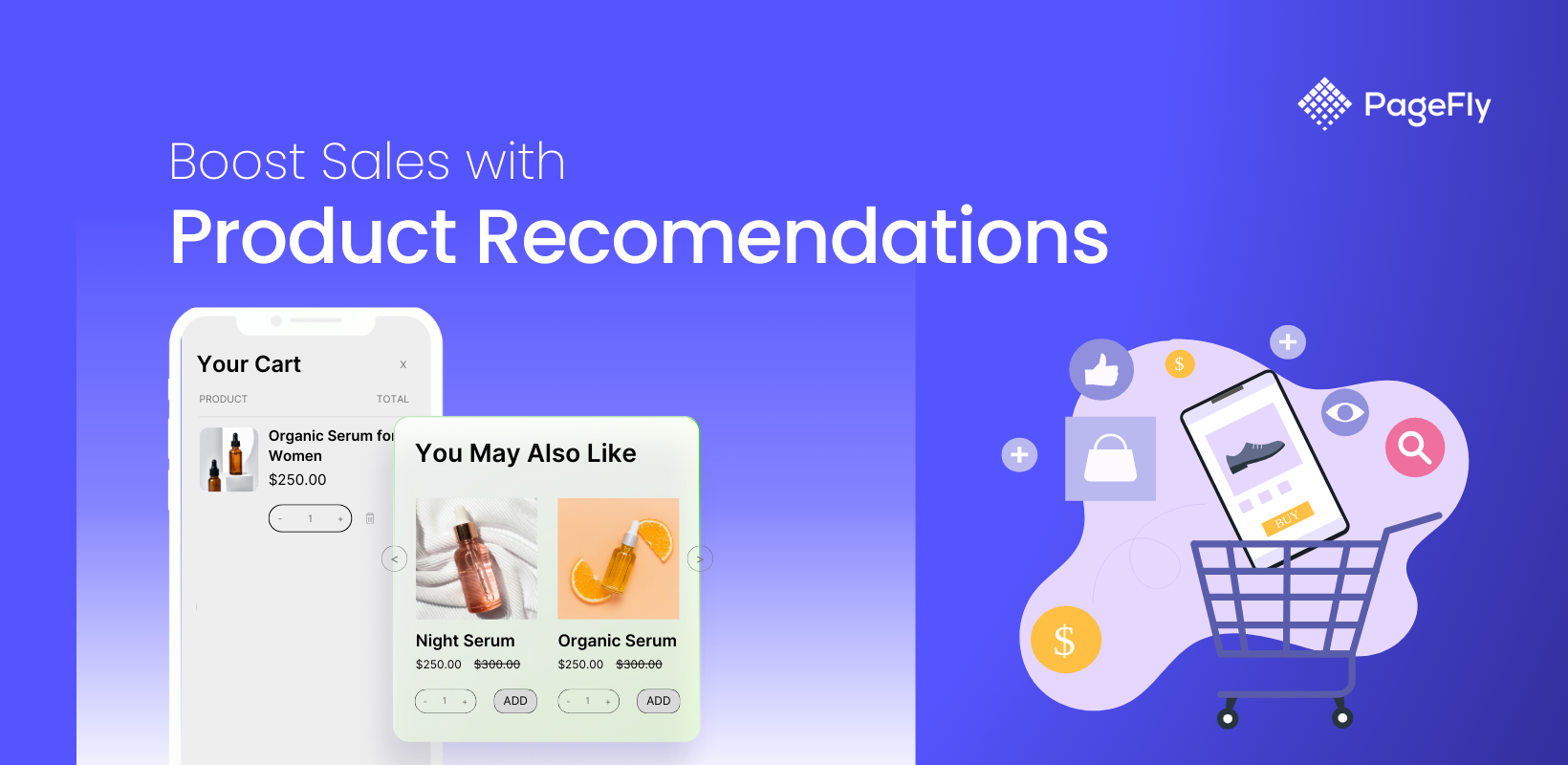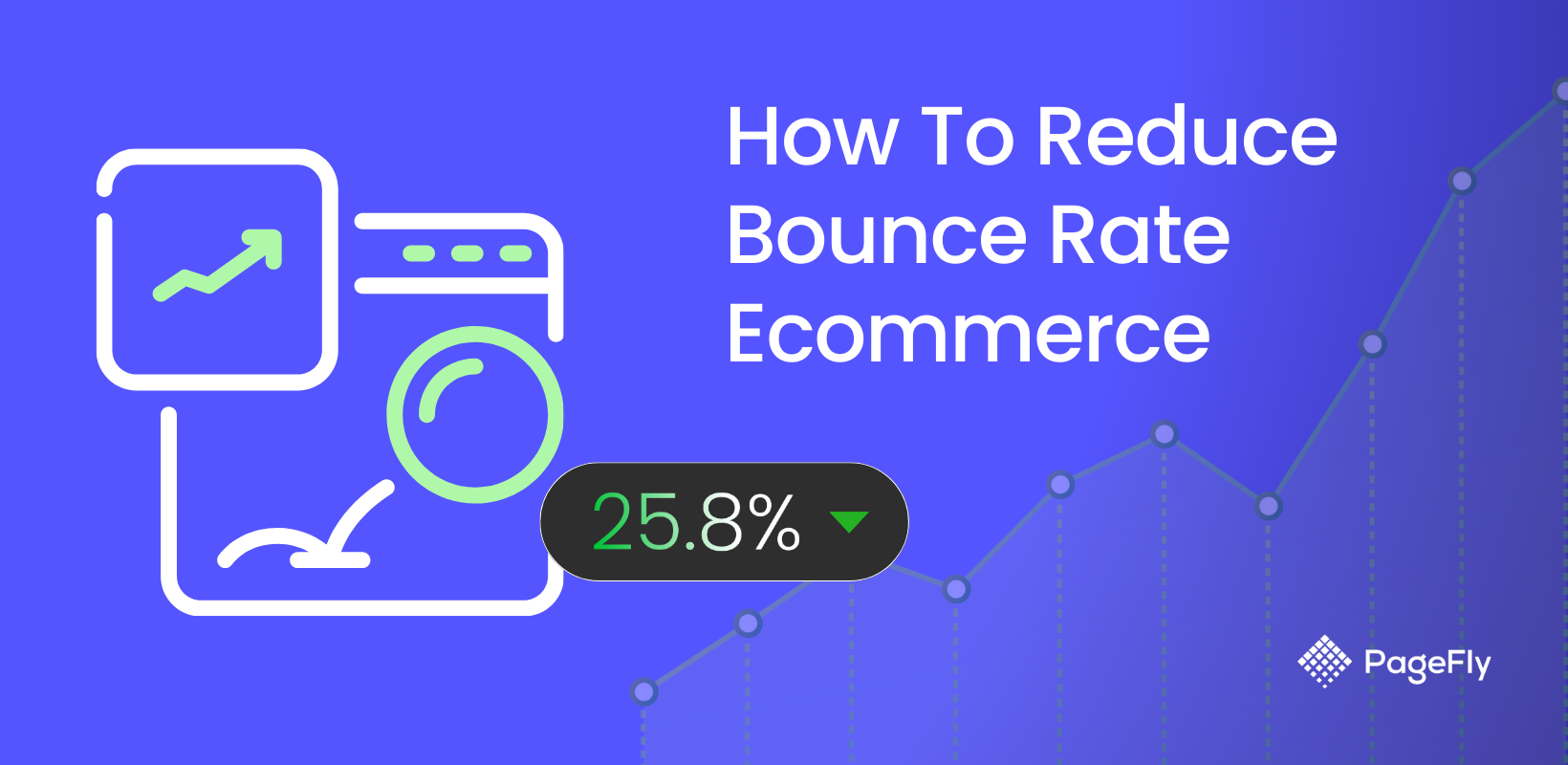Every successful online business knows that CRO and UX go hand in hand. Understanding how to blend conversion rate optimization (CRO) with user experience (UX) can transform your online store's performance. This guide will show you how to implement effective CRO design strategies while maintaining an excellent user experience.
Understanding CRO UX in ecommerce
What are the differences between CRO and UX
While both CRO (Conversion Rate Optimization) and UX (User Experience) aim to improve how users interact with your ecommerce site, their approaches and goals differ significantly.
The key distinction is that CRO specifically focuses on optimizing elements to drive conversions like purchases and sign-ups, while UX aims to create an intuitive, satisfying overall experience for users throughout their journey, regardless of whether it immediately leads to a conversion.
Let's take a look at the example of Olaplex, a merchant using PageFly. They leverage social media integrated with user-generated content (UGC) to enhance social proof and improve conversion rates.

On the other hand, they have a page that enables buyers to mix and match a personalized product bundle. The page boasts an intuitive design, showcasing the total price bar and different tabs for specific needs.

Below is a brief overview of the differences between CRO and UX design in terms of goals, approach, and metrics. It's important to note that these are fundamental factors. You can apply other goals, approach, or metrics based on your specific campaign.

📌 Important takeaway: When CRO and UX work together, they create a synergistic effect. Good UX naturally supports better conversion rates by removing friction points, while CRO insights can identify areas where the user experience needs improvement. This collaborative approach leads to both higher conversion rates and more satisfied customers. Learn more about CRO marketing.
Why CRO and UX work better together
As mentioned, when online merchants effectively combine CRO and UX strategies, they unlock powerful advantages that directly impact their bottom line. Below are what you can expect when implementing both approaches.
Direct revenue impact
The most immediate benefit of combining CRO and UX is the positive effect on your store's revenue. A well-designed user experience naturally supports conversion optimization efforts, creating a multiplier effect on your bottom line.
Key revenue benefits include:
- Higher average order value through intuitive product discovery and upselling
- Reduced cart abandonment rates from streamlined checkout processes
- Increased repeat purchase rates due to better overall shopping experience
Design Group, which operates Moodings.com, a Danish interior retailer, implemented a personalized recommendation solution to achieve its strategic goal of full personalization. This online store was designed to balance user preferences with conversion optimization, resulting in a 52% increase in the number of purchases.

Cost-effective customer acquisition
Good UX reduces the friction in your conversion funnel, making your CRO efforts more effective and lowering your customer acquisition costs.
Here's how this plays out in practice:
- Lower bounce rates mean more value from your existing traffic
- Better on-site experience leads to higher organic search rankings (according to the newest helpful content updates from Google)
- Improved word-of-mouth referrals from satisfied customers
- More effective paid advertising due to better landing page experiences
Enhanced customer loyalty and lifetime value
When customers enjoy using your store and can easily complete purchases, they're more likely to return. This combination creates a powerful foundation for building customer loyalty.
Merchants typically see:
- Higher customer retention rates
- More frequent repeat purchases
- Increased customer referrals
- Better reviews and ratings
Competitive edge in the market
In today's crowded ecommerce landscape, having both strong UX and CRO gives you a significant advantage over competitors who might only focus on one aspect.
This translates to:
- Better differentiation from competitors
- Stronger brand perception
- Higher market share in your niche
- More resilient business model
Scalable growth foundation
Perhaps most importantly, combining CRO and UX creates a sustainable foundation for growing your online store:
This foundation supports:
- More predictable revenue growth
- Easier expansion into new product lines
- Better adaptation to market changes
- More efficient use of marketing budgets
Practical steps to implement CRO UX for better results
Let's dive into actionable steps you can take to improve both your conversion rates and user experience. Each step builds upon the last, creating a comprehensive optimization strategy.
Research and analysis
Start by gathering comprehensive data about your users' behavior and your store's performance. This data will serve as the cornerstone for identifying pain points, optimizing user journeys, and making informed, targeted decisions to improve both user experience and conversion rates.
Key metrics to track:
- Conversion rates (overall and page-specific)
- Overall: The percentage of website visitors who complete a desired action (e.g., purchase, sign-up, lead form submission).
- Page-specific: The percentage of visitors to a particular page who complete a desired action on that page.
- Exit rates on key pages: The percentage of website sessions that end on a specific page. High exit rates on key pages (e.g., product pages, cart pages) can indicate potential user experience issues.
- Average time on site: The average amount of time visitors spend on your website during a single session.
- Cart abandonment rates: The percentage of online shopping carts that are abandoned before the customer completes the checkout process.
- Click-through rates on CTAs: The percentage of users who click on a call-to-action (CTA) button or link.
- User flow through your site: The typical path that users take when navigating your website. This can reveal bottlenecks, areas of confusion, and opportunities for improvement.
- Mobile vs. desktop performance:
- Mobile: How effectively your website functions and provides a good user experience on mobile devices (smartphones and tablets).
- Desktop: How effectively your website functions and provides a good user experience on desktop computers.
Tools to use:
- Google Analytics for overall traffic and conversion data
- Heatmap tools like Hotjar for user behavior analysis
- Customer feedback surveys for qualitative insights
A key part of implementing CRO and UX improvements is leveraging tools that simplify the process. The best Shopify apps offer features like customizable themes, analytics integration, and real-time customer data, empowering store owners to make informed design and marketing decisions.
Strategic UX design changes
Based on your research, implement targeted design changes that enhance both user experience and conversion potential.
Homepage conversion rate optimization and UX design
For a great store, the homepage is one of the most important pages to optimize. Here are some points you need to consider:
- Include a dedicated section for product categories immediately after the hero section.
- Design your hero section to capture attention and drive action.
- Incorporate trust-building elements throughout the page to instill confidence in potential buyers.
You should make the categories section visually clear with recognizable icons or images. This strategic placement helps visitors quickly discover relevant items, reducing navigation friction and improving the overall browsing experience.

For the hero section, let’s choose your current best-sellers using high-quality, professionally shot imagery that showcases products in their best light.

Moreover, you should strategically display recent customer reviews, security badges, and accepted payment methods in highly visible areas.

Product page conversion rate and UX optimization
On the other hand, for product pages, you should:
- Prioritize critical information above the fold to ensure immediate visibility.
- Craft clear, benefit-focused product descriptions that go beyond mere feature listing.
- Implement high-quality, zoomable product images.
- Strategically integrate social proof elements such as customer testimonials and user ratings.
All key product insights should be immediately visible upon landing on the product page. The majority of the screen should be dedicated to high-quality product media. To optimize for conversions (CRO), consider incorporating additional elements such as star ratings, countdown timers, or benefit bars.

For an insightful product description, Furme, a pet vacuum seller utilizing PageFly, featured a tab element with dedicated videos demonstrating each function. This section effectively communicates clear product benefits and effectively captures attention.

💡 Easily bring these UX design tips to life with a Shopify page builder like PageFly. You can create a more intuitive and user-friendly website without needing advanced design or coding skills. Like how I recreate Kylie Cosmetics' product recommendation section with just a few clicks.

Conversion path optimization
Streamline the journey from interest to purchase by removing friction points and enhancing key conversion elements.
Checkout Process:
- Reduce form fields to the absolute minimum
- Offer guest checkout options
- Display security badges prominently
- Show progress indicators
- Provide multiple payment options
Call-to-Action Buttons:
- Use action-oriented, clear language
- Make buttons stand out visually
- Position CTAs in natural reading flow
- Test different button colors and sizes
Pro tip: Run A/B tests on your CTAs using different variations of copy, color, and placement. For example, simply by changing the "Buy Now" button to "Add to Wardrobe." if you are selling clothing.
Mobile experience enhancement
With mobile commerce growing rapidly, optimizing for mobile users is crucial for both UX and CRO.
Key mobile optimization areas:
- Make buttons and links easily tappable (minimum 44x44 pixels)
- Space interactive elements appropriately
- Implement swipe gestures where appropriate
- Ensure text is readable without zooming
- Optimize images for faster loading
- Implement mobile-specific navigation
- Create mobile-friendly forms
- Add "scroll to top" buttons for long pages
Testing
Implement a systematic testing process to continuously improve both UX and conversion rates.
Effective testing approach:
- Start with hypothesis-driven tests based on your research
- Test one significant change at a time
- Run tests for statistically significant periods
- Document all test results for future reference
- Implement winning variations quickly
Pro tip: Create a testing calendar to ensure regular optimization efforts. Plan tests at least a month in advance, but stay flexible enough to respond to new data or opportunities.
Measurement and reporting
Track the impact of your changes using both UX and CRO metrics to ensure comprehensive improvement.
Key performance indicators:
- Conversion rate changes
- User satisfaction scores
- Task completion rates
- Revenue per visitor
- Average order value
- Customer lifetime value
Remember: The key to successful CRO UX implementation is balancing quick wins with long-term improvements. While some changes might show immediate results, others might take time to reveal their full impact on your business.
👉🏼 Track your website's performance with ease by integrating PageFly pages with Google Analytics. You can dive deep into advanced metrics and gain valuable insights about your visitors' behavior.
Advanced CRO UX Strategies
Personalization and AI
AI and ML are the backbone of eCommerce personalization. These technologies enable businesses to:
- Analyze large datasets: AI sifts through massive amounts of customer data to identify patterns and insights.
- Predict customer behavior: Machine learning algorithms forecast what a customer might need based on past interactions.
- Automate personalization: AI-driven systems adjust website content, product recommendations, and marketing messages in real time.
🤖Example: Amazon uses AI-powered recommendation engines to suggest products, accounting for a significant portion of its revenue.

You can leverage AI for enhanced personalization as the process below:
Stage 1: Basic Implementation |
|
Stage 2: Advanced Features |
|
Stage 3: Full AI Integration |
|
Social integration
On average, people spend about 2 hours and 30 minutes daily on social media, according to Statista. This means a huge opportunity for online stores to connect with customers and increase sales.
To help you capitalize on these opportunities, we've gathered effective strategies from successful brands.
- Leverage user-generated content(💄rhode)

- Utilize enthusiastic social media comments(💋Rare Beauty)

- Drive product discovery with Pinterest (🎽HOTSUIT)

- Partner with key opinion consumers (🦈GYMSHARK)

PageFly empowers you to create a seamless shopping experience by merging the power of social media and eCommerce. With its extensive app integrations, you can:
- Effortlessly showcase authentic social feeds on your website, building trust and inspiring.
- Craft captivating shoppable landing pages that convert visitors into customers.
With PageFly, you can craft visually stunning experiences that drive conversions.
Conclusion
Successful CRO UX implementation requires a balanced approach that prioritizes both conversion optimization and user experience. By focusing on both aspects, you create a website that not only converts better but also provides value to your users. Remember that user experience optimization is an ongoing process, keep testing, measuring, and improving to stay ahead of the competition.




